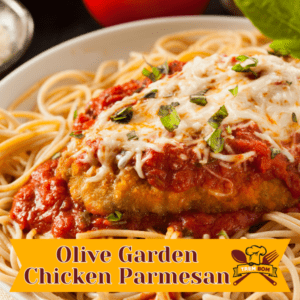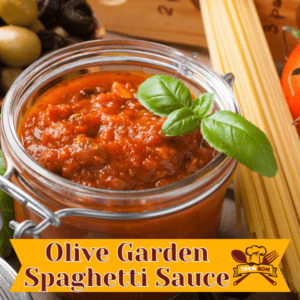
Rice noodles have played a significant role in the food culture of Asia for centuries. They are considered a staple food in many Asian countries and are an essential part of many regional cuisines. From Chinese noodle soup to Vietnamese pho, rice noodles have become a symbol of Asian identity and pride. In this article, we explore the cultural significance of rice noodles in Asian cuisines and how they have become an integral part of the cultural fabric of the continent.
Key Takeaways:
- Rice noodles are a staple food in many Asian countries and an essential part of many regional cuisines.
- The cultural significance of rice noodles in Asian cuisines is tied to tradition and taste, connecting communities through shared culinary experiences.
- The historical roots of rice noodles date back centuries in China, and their popularity has spread throughout Asia and the world.
- The Chinese character for “noodle” reflects the cultural identity and importance of rice noodles in Chinese culture.
- Rice noodles have become a symbol of Asian identity and pride, representing the diversity and richness of Asian cuisines.
Rice Noodles: A Staple in Chinese Food Culture
When it comes to Chinese food, rice noodles are the unsung heroes of the Chinese culinary world. With their delicate texture, subtle flavor, and incredible versatility, rice noodles have become a staple in Chinese cuisine. They are widely recognized for their cultural significance, representing the Chinese culture in many ways.
The significance of rice noodles in Chinese culture lies in its preparation as well as its consumption. The Chinese take great pride in their culinary heritage, and rice noodles are a reflection of that heritage. Cooked with diligence and served with pride, rice noodles bring families together for meals and special occasions, creating a sense of unity and identity.
Furthermore, rice noodles have deep cultural roots in Chinese folklore and tradition. They are believed to symbolize longevity, making them a popular choice for birthdays and other celebrations. In addition to being used in traditional dishes, such as noodle soup and noodles with gravy, rice noodles are also used to create elaborate dishes with intricate designs that represent various cultural symbols.
Rice noodles in China have made their way from being a street food to fine dining, with different variations available in different regions. They are enjoyed for breakfast, lunch, and dinner and are often paired with a variety of flavors, ranging from spicy Sichuan to savory Cantonese. Whether you are a local or a visitor, rice noodles are a must-try in China, and will offer a true taste of Chinese culture.
The Origin and History of Rice Noodles
Rice noodles have a rich history dating back to ancient China. It is believed that rice noodles were first created during the Qin Dynasty (221–207 BC) in China. However, some sources claim that rice noodles existed even earlier, during the Han dynasty (206 BC – 220 AD).
During the Han dynasty, the Chinese were known for their invention of various types of noodles. They used wheat flour to make noodles in the north and rice flour in the south. The Chinese would dry the noodles, which had a long shelf life and were easy to transport. The popularity of Chinese noodles soon spread throughout Asia.
As the centuries passed, rice noodles became more widely available as they were easier to produce than wheat noodles. Rice cultivation was common in southern China, which led to the development of rice noodle varieties such as vermicelli and the flat, wide noodles used in dishes like pho.
Today, you can find rice noodles in various forms and varieties all across Asia and beyond. From thin and delicate rice vermicelli to thick and chewy Japanese udon noodles, rice noodles continue to be a beloved staple in many cuisines around the world.
Regional Varieties of Rice Noodles in China
The beauty of rice noodles lies in the regional diversity of the dish. There are significant differences in the styles and flavours of rice noodles across northern and southern China. In northern China, the noodles tend to be thick, long and chewy, while, in southern China, the noodles are thinner and softer.
One of the most famous rice noodle varieties in China is the Guilin rice noodle. Originating in the Guangxi province, these noodles are known for their unique taste and silky texture. They are traditionally eaten for breakfast, served in a savoury broth with sliced pork, pickled bamboo shoots and peanuts.
In Yunnan Province, rice noodles are a staple food, and there are more than 300 different varieties. Yunnan rice noodles are known for their soft texture and are often served in a spicy broth with sliced beef or pork and pickled vegetables.
| Northern China | Southern China |
|---|---|
| Noodles are thick, long and chewy | Noodles are thinner and softer |
| Often served with meat and vegetables in gravy | Often served in a clear soup broth |
| Popular varieties include Lanzhou beef noodles and hand-pulled noodles | Popular varieties include Guilin rice noodles and laksa noodles |
While rice noodles are a staple in Chinese cuisine, they are also present in other Asian cuisines. Vietnamese pho, for example, is a popular rice noodle soup, and Thai pad Thai is a stir-fry dish that prominently features rice noodles.
Regional varieties of rice noodles are not just limited to Asian cuisines. They can be found in dishes all around the world, from Italian spaghetti alla chitarra, a type of pasta made with rice flour, to the Burmese dish mohinga, a rice noodle soup that is considered the national dish of Myanmar.
The Making of Rice Noodles
Rice noodles are a staple in many Asian cuisines, including Chinese cuisine. They are versatile and can be used in various dishes, such as noodle soups, stir-fries, and salads. Here, we explore the process of making rice noodles and the different types of rice flour used.
How Noodles are Made
The process of making rice noodles is relatively simple. Rice flour is mixed with water to form a dough, which is then steamed or boiled to create the noodles. The thickness and texture of the noodles can be adjusted by varying the amount of water used and the length of time they are cooked.
While rice flour is the primary ingredient in rice noodles, other types of flour may also be used, such as wheat flour. Wheat noodles are popular in Northern China, while rice noodles are more common in the South.
Hand-Pulled Noodles vs. Machine-Made Noodles
Traditionally, rice noodles were made by hand. This method involves kneading the dough, rolling it out, and cutting it into thin strips. Hand-pulled noodles are still popular in some areas of China, but the process is time-consuming and requires a lot of skill.
Machine-made noodles are more efficient and have a longer shelf life. They are made using a noodle-making machine, which extrudes the dough through a series of rollers and blades to create the desired thickness and shape of noodle.
Regional Varieties of Rice Noodles
In addition to the traditional hand-pulled and machine-made noodles, there are also regional varieties of rice noodles in China. For example, Guilin rice noodles, which are from the Guangxi province, are known for their spicy and sour flavor. Yunnan Province is also famous for its rice noodles, which are often served with a hot and sour broth.
Overall, rice noodles are a versatile and integral part of Chinese cuisine, with a fascinating history and many regional varieties.
Rice Noodles in Chinese Cuisine
Rice noodles are a staple in Chinese cuisine, used in a variety of dishes that showcase their versatility and texture. From noodle soup to noodles with gravy, from cold noodles to longevity noodles, rice noodles hold a significant place in the Chinese food tradition.
Noodle soup, also known as “mi tang” in Chinese, is a popular dish that features rice noodles, vegetables, meat, and a flavorful broth. It is a common breakfast food and a comforting meal for many Chinese people. Noodles with gravy, or “zhajiangmian,” is another popular dish that features thick rice noodles served with a savory soybean paste sauce, minced meat, and vegetables.
Cold noodles, or “liangpi,” are a popular street food in China that originates from the Shaanxi Province. They are served with a spicy sauce made with garlic, vinegar, and chili oil. Longevity noodles, also known as “changshoumian,” are a symbol of longevity and are often served during birthday celebrations or other auspicious occasions. They are long, uncut noodles that are boiled and served with vegetables and meat.
Whether in a soup or stir-fry dish, rice noodles play an essential role in Chinese cuisine. They are a versatile ingredient that can adapt to different flavors and cooking methods, making them a beloved staple of Chinese cuisine.
The Rise of Instant Noodles
Instant noodles have become a staple food in many households around the world. In China, the development of instant noodles can be traced back to the 1950s, when food shortages and rationing were common. Instant noodles were seen as an affordable and convenient option, especially for students and those living in urban areas.
Since then, the popularity of instant noodles has continued to grow, both in China and abroad. In fact, China is now the largest producer and consumer of instant noodles in the world. The development of instant noodles has had a significant impact on Chinese society, providing a low-cost and easy-to-prepare meal option for millions of people.
The development of instant noodles also brought about changes in how noodles were packaged and stored. Instant noodles have a longer shelf life compared to fresh noodles, making them more convenient for consumers who need a quick and easy meal option.
While there have been concerns about the health implications of consuming large amounts of instant noodles, their popularity doesn’t seem to be waning anytime soon. The convenience and affordability of instant noodles ensure that they remain a popular choice for many people around the world.
Rice Noodles Beyond China
Rice noodles are not only a staple in Chinese food culture, but they are also widely available in other cuisines around the world. In Asia, rice noodles can be found in many traditional dishes, including Vietnamese pho, Thai pad Thai, and Malaysian laksa. In India, the popular dish idiyappam is made using rice noodles, while in Japan, the dish ramen features wheat noodles that have a similar texture to rice noodles.
Outside of Asia, rice noodles have also gained popularity worldwide. In Western cuisine, rice noodles are often used in salads or served with stir-fried vegetables and meats. They are a versatile ingredient that can be incorporated into many different types of dishes.
The availability of rice noodles worldwide has also led to an increase in their usage as a gluten-free alternative to wheat noodles. This has made rice noodles a popular option for those with gluten intolerances or allergies, further increasing their popularity.
As rice noodles continue to gain recognition and popularity globally, it is clear that they have become a beloved ingredient in many different cuisines and cultures around the world.
Rice Noodles and Cultural Identity
Rice noodles are not just a delicious and versatile ingredient in Asian cuisines, but they also hold significant cultural value. In China, rice noodles are referred to as “miàn,” a character that represents the cultural identity and deep connection between noodles and Chinese culture.
The Chinese character for “miàn” is composed of two parts. The top part represents wheat, while the bottom part represents the human heart or mind. Together, these two parts signify the importance of nourishing the body and soul through food, and how this nourishment is integral to Chinese culture.
Rice noodles have become an essential component of Chinese cuisine and are often used in dishes that celebrate the country’s traditions and cultural identity. For example, longevity noodles are a popular dish in China, which signifies good luck and a long life. These noodles are longer than normal and are often eaten during birthdays or special occasions.
Furthermore, rice noodles play a role in many Chinese festivals. For instance, during the Dragon Boat Festival, people eat zongzi, a traditional Chinese food made from glutinous rice and wrapped in bamboo leaves. Zongzi can contain a variety of fillings, including rice noodles, which are a staple ingredient in this dish.
Overall, rice noodles hold a special place in Chinese culture and are an essential ingredient in Chinese cuisine. By exploring the cultural significance of rice noodles, we gain a deeper understanding of their history, importance, and connection to Chinese identity.
Conclusion
In conclusion, rice noodles have a significant cultural importance in Asian cuisines. They are not just a dish, but a reflection of the cultural identity, history, and traditions of the communities that consume them. The Chinese food culture, in particular, has embraced rice noodles as a staple food, which has become an integral part of their cuisine and identity. From the origin and evolution of rice noodles in ancient China to their regional varieties, the making process, and their presence in different dishes, rice noodles have a rich history and cultural significance in Chinese and other Asian cuisines.
Today, rice noodles are appreciated worldwide, and their popularity continues to grow. They are readily available in different countries and have become part of other cuisines beyond Asia. However, their connection to Chinese culture remains strong, and the Chinese character for “noodle” is a symbol of their cultural significance. Whether enjoyed in noodle soup, with gravy, cold, or in longevity noodles, rice noodles have brought people together and created a sense of community, tradition, and taste across Asia and the world.
FAQ
What is the cultural significance of rice noodles in Asian cuisines?
Rice noodles hold significant cultural importance in Asian cuisines. They are not only a staple food but also a symbol of cultural identity and tradition. Rice noodles bring communities together through shared culinary experiences and reflect the diversity of Asian cultures.
Why are rice noodles considered a staple in Chinese food culture?
Rice noodles are considered a staple in Chinese food culture due to their widespread consumption and integration into various Chinese dishes. They have become a fundamental component of Chinese cuisine, showcasing the rich flavors and culinary heritage of China.
Where did rice noodles originate and what is their history?
Rice noodles originated in ancient China and have a long history dating back to dynastic times. They were first documented during the Qin Dynasty and further developed in the Han Dynasty. Since then, rice noodles have evolved and spread throughout different regions of China.
What are the regional varieties of rice noodles in China?
China boasts a wide range of regional rice noodles. Some popular varieties include Guilin rice noodles from southern China and various noodles found in northern China. Yunnan Province is also known for its distinct rice noodles. Each region has its own unique recipes and preparation methods.
How are rice noodles made?
Rice noodles are made using rice flour as the main ingredient. The process involves grinding the rice into a fine powder, mixing it with water to form a dough, and then shaping the dough into noodles. There are different techniques for making rice noodles, including hand-pulled and machine-made methods.
What role do rice noodles play in Chinese cuisine?
Rice noodles play a significant role in Chinese cuisine and are used in a variety of dishes. They are commonly featured in noodle soups, noodles with gravy, cold noodle salads, and longevity noodles. Rice noodles add texture and flavor, making them a beloved component of Chinese culinary traditions.
How did instant noodles become popular in Chinese society?
Instant noodles gained popularity in Chinese society due to their convenience and long shelf life. They provided a quick and affordable meal option for busy individuals. Over time, instant noodles became a cultural phenomenon, demonstrating the rapid pace of modern life and the adaptability of Chinese cuisine.
Are rice noodles exclusive to Chinese cuisine?
Rice noodles are not exclusive to Chinese cuisine. They are also found in other Asian cuisines, including Thai, Vietnamese, and Malaysian dishes. Rice noodles have gained global popularity and are enjoyed in various culinary traditions worldwide.
How do rice noodles contribute to cultural identity?
Rice noodles contribute to cultural identity by representing a shared culinary heritage and symbolizing the unique traditions of a particular culture. In Chinese culture, for example, the Chinese character for “noodle” embodies the cultural significance and deep-rooted connection between rice noodles and Chinese identity.






